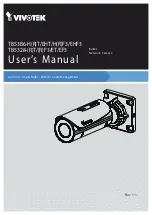
1
Introduction
This document provides examples for deploying two-chassis IRF fabrics.
Prerequisites
The configuration examples in this document were created and verified in a lab environment, and
all the devices were started with the factory default configuration. When you are working on a live
network, make sure you understand the potential impact of every command on your network.
This document assumes that you have basic knowledge of H3C IRF.
General restrictions and guidelines
When you set up and configure an IRF fabric, follow the restrictions and guidelines in this section.
For more information about IRF configuration restrictions and guidelines, see
Virtual Technologies
Configuration Guide
for your devices.
Hardware compatibility with IRF
To establish an IRF fabric successfully, make sure the member device models, their IRF physical
interfaces, and switching fabric modules meet the compatibility requirements in
Table 1 Hardware compatibility matrix for IRF establishment
Hardware
platform
IRF members
IRF physical interfaces
Switching fabric module
requirements
CR16006-F
CR16010-F
CR16014-F
Any combination
of these router
models.
10-GE or 40-GE Ethernet fiber
ports on CSPC cards except
the following cards:
•
CSPC-GE16XP4L-E.
•
CSPC-GE24L-E.
•
CSPC-GP24GE8XP2L-E.
Use either of the following schemes:
•
Use Type-A switching fabric
modules across the entire IRF
fabric.
•
Use Type-B and Type-D
switching fabric modules.
On a member device, use
Type-B or Type-D modules,
but not both.
Different types of switching
fabric modules can be used
between member devices.
CR16006-F
CR16010-F
CR16010H-F
CR16014-F
CR16018-F
All members are
the same model.
10-GE, 40-GE, or 100-GE
Ethernet fiber ports on CEPC
cards or CSPEX cards except
the following cards:
•
CSPEX-1204.
•
CSPEX-1104-E.
•
CSPEX-1512X.
•
CSPEX-1612X.
•
CSPEX-1812X.
All member devices use same
model switching fabric modules.
MPU requirements for IRF
To form a CR16000-F IRF fabric, every member device must use the same model of MPUs.



































